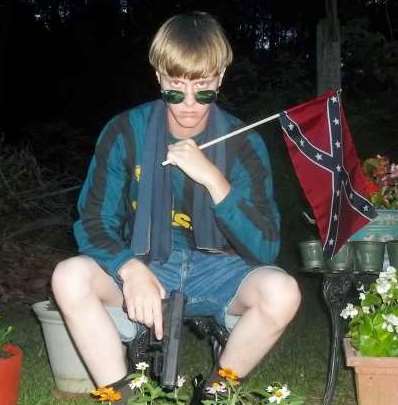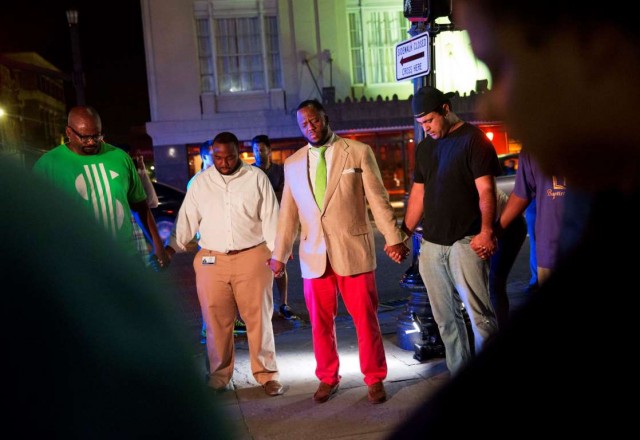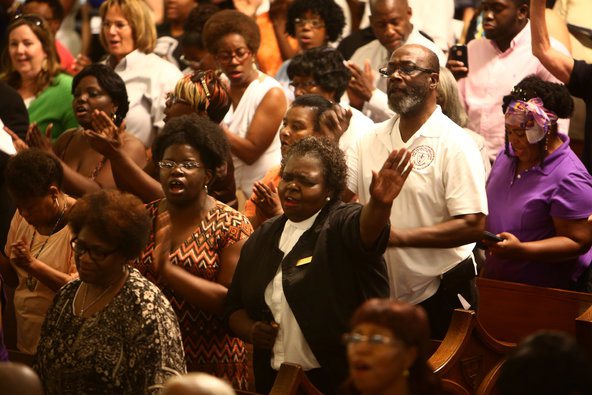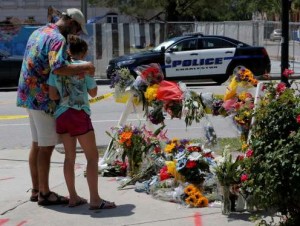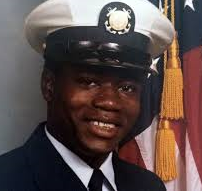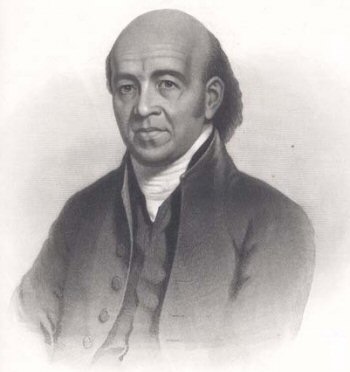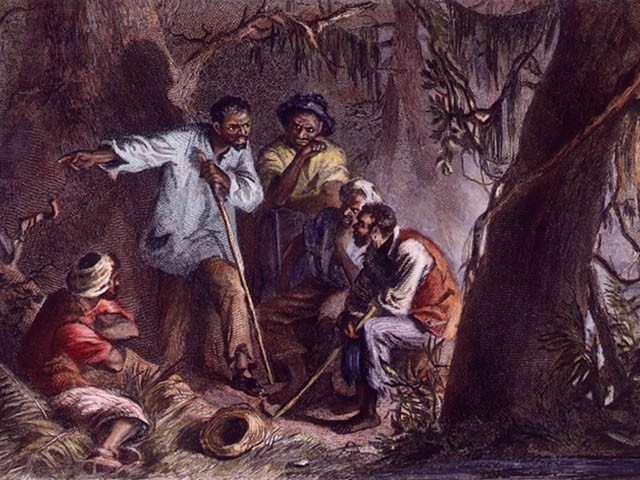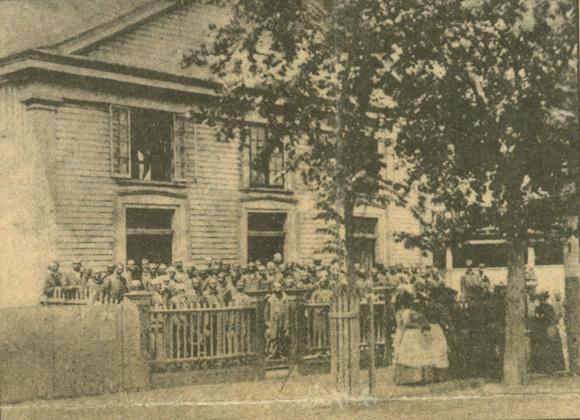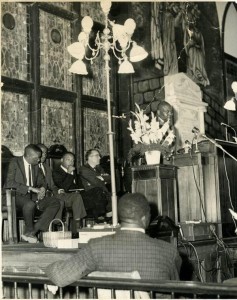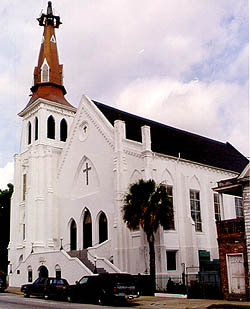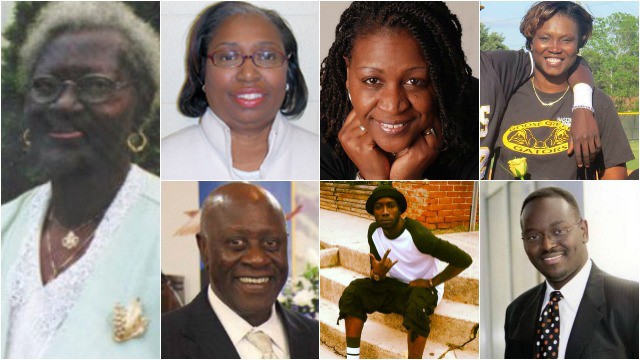
Shot to death by white terrorist Dylann Roof: Left: Susie Jackson | Top Row: Cynthia Hurd DePayne Doctor, and Sharonda Coleman-Singleton | Bottom row: Daniel Simmons Sr., Tywanza Sanders, and Rev. Clementa Pinckney.
Pastor, State Senator Clementa Pinckney, was a well-known civil rights leader who was campaigning for all S.C. cops to wear body cameras
Emmanuel African Methodist Church founded in 1816 by kidnapped Africans in South Carolina
Denmark Vesey, executed for attempted 1822 rebellion against slavery, was a church founder
Boston police expert calls crime “terrorism,” not just a hate crime.
JUNE 17, 2015
CHARLESTON, S.C. (Reuters) – A white man was arrested on Thursday on suspicions he killed nine people at a historic African-American church in South Carolina after sitting with them for an hour of Bible study in an attack U.S. officials are investigating as a hate crime.
The mass shooting set off an intense 14-hour manhunt that ended when 21-year-old Dylann Roof was arrested in a traffic stop about 220 miles (350 km) north of Charleston, South Carolina, where the shooting occurred, officials said.
Wednesday’s mass shooting at the almost 200-year-old Emanuel African Methodist Episcopal Church, comes after a year of turmoil and protests over race relations, policing and criminal justice in the United States. A series of police killings of unarmed black men has sparked a renewed civil rights movement under the “Black Lives Matter” banner.
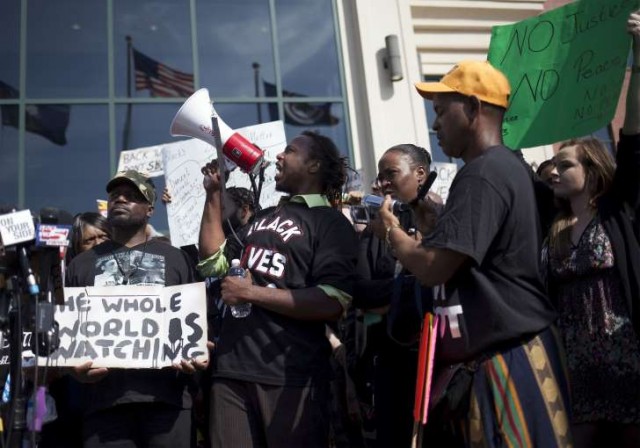
Protesters in Charleston after white cop Michael Slager shot Black man Walter Scott, 51, in the back to death in April, 2015.
Four pastors, including Democratic state Senator Clementa Pinckney, 41, were among the six women and three men shot dead at the church nicknamed “Mother Emanuel,” which was burned to the ground in the late 1820s after a slave revolt led by one of its founders [Denmark Vesey].
Other victims included three church pastors: DePayne Middleton Doctor, 49, Sharonda Coleman Singleton, 45 and Reverend Daniel Simmons, 74; Cynthia Hurd, a 54-year-old employee of the Charleston County Public Library, and Susie Jackson, 87; Ethel Lance, 70, Tywanza Sanders, 26, and Myra Thompson 59, an associate pastor at the church, according to the county coroner.
“This is going to put a lot of concern to every black church when guys have to worry about getting shot in the church,” said Tamika Brown, who attended one of several overflow prayer vigils held at Charleston churches.
Police in Charleston responded to multiple bomb threats around the city through the course of the day on Thursday.
Three people survived the attack.
“It is a very, very sad day in South Carolina,” Governor Nikki Haley, a Republican, in a tearful statement.
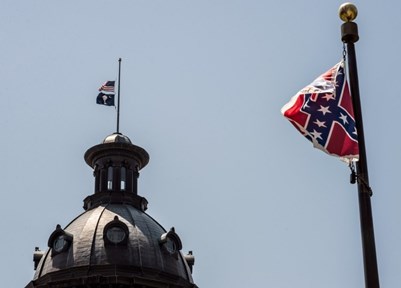
The South Carolina and U.S. flags fly at half staff at state capitol as the Confederate flag unfurls at full staff after the church killings, at the Confederate Monument nearby, in Columbia, SC. Sean RayfordGetty /Images
That grief rang hollow for some civil-rights activists, who noted that the state capital in Columbia still flies the Confederate flag, the rallying symbol of the pro-slavery South during the Civil War.
“The reality that racism is alive and well and that we have a problem with guns,” said Clayborne Carson, founding director of the Martin Luther King Jr. Research and Education Institute at Stanford University. “People will throw up their hands and say ‘how terrible’ and the governor of South Carolina will put the Confederate flag of the state at half staff and then will get back to passing more laws that allow people to carry guns.”
“The fact that this took place in a black church obviously raises questions about a dark part of our history,” said U.S. President Barack Obama. “Once again, innocent people were killed in part because someone who wanted to inflict harm had no trouble getting their hands on a gun.”
The United States has seen a series of mass shootings in recent years, including the 2012 massacre at Sandy Hook Elementary School, where a gunman killed 20 children and six adults. Democratic efforts to reform the nation’s gun laws, protect by the Second Amendment of the U.S. Constitution, failed after that incident.
 Editor: Comparisons with other mass shootings are not valid; they leave out the fact that police have killed 527 people, mainly Black and Latin, since Jan. 1, 2015.
Editor: Comparisons with other mass shootings are not valid; they leave out the fact that police have killed 527 people, mainly Black and Latin, since Jan. 1, 2015.
GIFT OF A GUN
A man who identified himself as Carson Cowles, Roof’s uncle, told Reuters that Roof’s father had recently given him a .45-caliber handgun as a birthday present and that Roof had seemed adrift.
“I don’t have any words for it,” Cowles, 56, said in a telephone interview. “Nobody in my family had seen anything like this coming.”
Roof was armed with a handgun but surrendered peacefully at his arrest, said Charleston Police Chief Greg Mullen.
In a Facebook profile apparently belonging to Roof, a portrait showed him wearing a jacket emblazoned with the flags of apartheid-era South Africa and of the former Rhodesia, now Zimbabwe, both formerly ruled by white minorities. Many of his Facebook friends were black.
Roof was arrested on two separate occasions at a shopping mall earlier this year for a drug offense and trespassing, according to court documents.
Roof’s mother, Amy, declined to comment when reached by phone.
“We will be doing no interviews, ever,” she said before hanging up.
Sylvia Johnson, a cousin of Pinckney, told MSNBC that a survivor told her the gunman reloaded five times during the attack despite pleas for him to stop.
“He just said, ‘I have to do it. You rape our women and you’re taking over our country,” Johnson said.
U.S. Attorney General Loretta Lynch said her office was investigating whether to charge Roof with a hate crime motivated by racial or other prejudice.
Under federal and some state laws, such crimes typically carry harsher penalties, but South Carolina is one of just five U.S. states not to have a hate-crimes law.
RISING RACIAL TENSIONS
Demonstrations have rocked New York, Baltimore, Ferguson in Missouri and other U.S. cities following police killings of unarmed black men including Eric Garner, Freddie Gray and Michael Brown.
A white police officer was charged with murder after he shot Walter Scott, an unarmed black man, in the back in April in neighboring North Charleston.
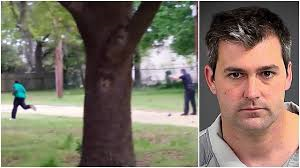
SC cop Michael Slager shot Michael Scott, 51, to death as he ran from being tasered. Slager faces murder charges.
The Southern Poverty Law Center, which researches U.S. hate groups, said the attack illustrates the dangers that home-grown extremists pose.
“Since 9/11, our country has been fixated on the threat of Jihadi terrorism. But the horrific tragedy at the Emanuel AME reminds us that the threat of homegrown domestic terrorism is very real,” the group said in a statement, referring to the Sept. 11, 2001 attacks on the United States.
There have been 4,120 reported hate crimes across the United States, including 56 murders, since 2003, the center said.
“It is a very, very sad day in South Carolina,” Governor Nikki Haley, a Republican, in a tearful statement.
CHURCH A SYMBOL OF BLACK FREEDOM; DENMARK VESEY, EXECUTED FOR 1822 REBELLION AGAINST SLAVERY, WAS A CHURCH FOUNDER
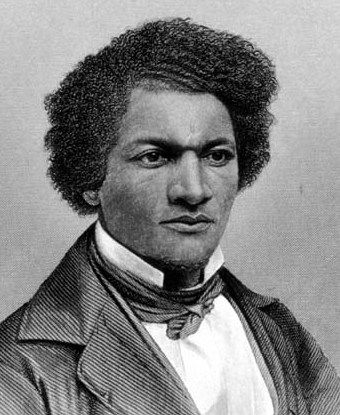
Denmark Vesey, leader of the Emmanuel AME Church, was executed along with three dozen others for planning a rebellion against slavery in 1822.
When a gunman opened fire on Charleston’s Emanuel A.M.E. Church Wednesday, spraying bullets into a group of worshippers gathered for a mid-week prayer meeting, it was as though history repeated itself.
This historic congregation, the oldest of its kind in the South, had already seen more than its fair share of tumult and hate. It was founded by worshippers fleeing racism and burned to the ground for its connection with a thwarted slave revolt. For years its meetings were conducted in secret to evade laws that banned all-black services. It was jolted by an earthquake in 1886. Civil rights luminaries spoke from its pulpit and lead marches from its steps. For nearly two hundred years it had been the site of struggle, resistance and change.
On Wednesday, the church was a crime scene — the street outside aglow with the flashing red lights of police cars and echoing with the screech of sirens. Nine people had been killed there, reportedly including the church’s pastor, Rev. Clementa Pinckney, though police had not confirmed his death.
I do believe this was a hate crime,” Charleston Police Chief Greg Mullen said at a press conference early Thursday morning.
To those watching in Charleston and from afar, it was devastating.
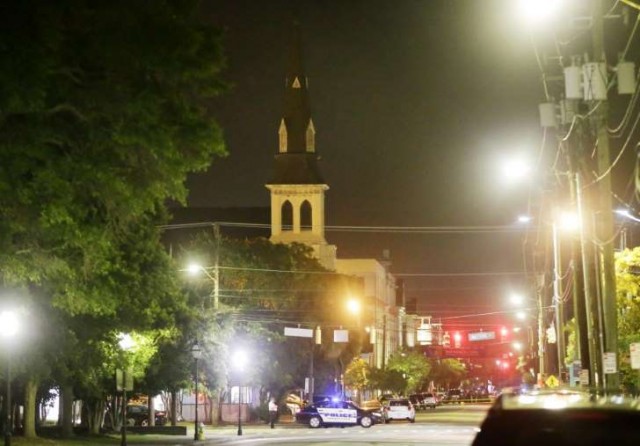
Emmanuel AME Church after murders; founded in 1816 the original church was burned to the ground after Denmary Vesey rebellion.
“It’s not just a church. It’s also a symbol … of black freedom,” said Robert Greene, who studies the 20th century South at the University of South Carolina. “That’s why so many folks are so upset tonight, because it’s a church that represents so much about the rich history and tradition of African Americans in Charleston.”
In Charleston, the church is affectionately known as “Mother Emanuel,” a nod to its age and its eminence in the community. It is a place people take pride in, said Rev. Stephen Singleton, who was pastor there from 2006 to 2010 — all soaring ceilings and fine pinewood floors, with an antique pipe organ that had been shipped from Europe more than a century ago.
“They’re just God-fearing people,” Singleton said of his former congregation. “People who lived in modesty in light of the history of the congregation they called home.”
That history is a long and storied one. The congregation was founded in the era of slavery by Morris Brown, a founding pastor of the African Methodist Episcopal Church. In 1816, frustrated with the racism he encountered in Charleston’s segregated churches, Brown decided to form a Church of his own. About 4,000 parishioners followed him — more than 75 percent of city’s black community, according to a history published by the College of Charleston.
From the beginning, the congregation was a focal point of community organizing and anti-slavery activism — provoking fears and intense distrust among the city’s white population. According to a PBS documentary, white Charlestonians constantly monitored the church, sometimes disrupting services and arresting worshipers.
They had some reason for alarm: Denmark Vesey, the organizer of one of the nation’s most notable failed slave uprisings, was a leader in the church. He fiercely and insistently preached that African Americans were the new Israelites, that their enslavement would be punished with death, and in 1822 he and other leaders began plotting a rebellion.
The revolt was planned for June 16 — 193 years and one day before the shooting Wednesday night. But another member of the church, a slave named George Wilson, told his master about the plot. Nearly three dozen organizers — including Vesey — were put on trial and executed, while another 60 were banished from the city. Believing that “black religion” had caused the uprising, South Carolina instituted a series of draconian measures against African American churches and communities, including a ban on services conducted without a white person present. The Charleston A.M.E. congregation was dispersed and their building set ablaze.
After the end of the Civil War, the A.M.E. congregation — which had been conducting services in secret for decades and worked as part of the Underground Railroad — was formally re-established and adopted the name Emanuel. Parishioners rebuilt their church on Calhoun Street, a half mile away from Fort Sumter, where the Civil War’s first shots were fired and, a block from the square that had been a military marching ground during the Civil War and the site of a celebratory parade of African American residents once the conflict ended.
When that wooden building was destroyed in a 1886 earthquake, the congregation replaced it with the stately gothic revival structure seen today.
The church’s activism resumed along with services, and by the 20th century it had become a focal point of South Carolina’s civil rights movement.
Booker T. Washington spoke there in 1909 to a large audience of both white and black admirers. In 1962, Rev. Martin Luther King Jr. gave a speach about voting rights and making the “American dream a reality.” So did Roy Wilkins, as executive secretary of the NAACP. In 1969, as Charleston was in the midst of a massive strike aimed at creating a union for the state’s mostly black hospital workers, Coretta Scott King led a march from Emanuel A.M.E.’s steps while 1000 state troopers and national guardsmen looked on.
“If there was any sort of civil rights protest or activity in Charleston it was almost always centered around that church,” Greene said.
Singleton, the former pastor of Emanuel A.M.E., said the church was still a place for political organizing when he was there. Politicians often dropped in, he recalled. Parishioners organized for community issues.
Pinckney, 41, the current pastor who was in the church when the gunman opened fire, was even more active. For more than a decade he’d served as a member of the South Carolina State Senate. He was an advocate for a bill in the state legislature that would require police officers to wear body cameras, calling it “our No. 1 priority,” according to the Charleston Post and Courier.
For many, the initial response was one of shock.
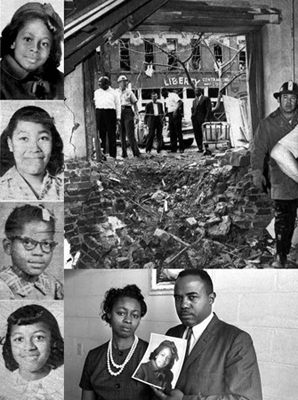
Four little girls died in the bombing of 16th St. Baptist Church in Birmingham, Ala. in 1963. Revolutionary activist Angela Davis lived next door to one.
“If we’re not safe in the church, God, you tell us where we are safe,” mourners at a prayer circle told a reporter for MSNBC.
But Robert Mickey, a University of Michigan political scientist who studies race and politics in the post-War South, noted that activist African American churches have been targeted before.
“They’ve been sites of black protest and community organizing, and they have long been targets as well,” he said, noting the long list of racist attacks on black churches, particularly the 1963 bombing of the 16th Street Baptist Church in Birmingham.
The gunman on Wednesday, who police said was about 21 years old, may not have been aware of that history, Mickey added. But the congregation at Emanuel A.M.E., as well as the thousands of people who watched the news of the killings there in horror, certainly did.
“When you’re on the receiving end of the violence it’s pretty hard not to put it in that context,” Mickey said. “You can’t help but notice the continuities, the violence and fear that constantly these revisit these same communities.”
Others agreed.
But Singleton said that the attack on his old church “should be dealt with as an individual,” not as part of some broader trend.
“I think the comparison that you can draw from it is, evil is real and it’s prevalent all over the place,” he said, adding, “I want to encourage people of faith to be prayerful. Embrace our faith and embrace each other.”
Singleton, who preaches in Columbia, S.C. now, said he’ll heading back to Charleston in the next few days. He wants to visit his old congregation, he said, to pay his respects to those who were killed and the church that has had another painful chapter added to its history.
“That church has a legacy, and it won‘t be destroyed because of this,” he said, firmly. “Chances are it’ll probably come out stronger.”

